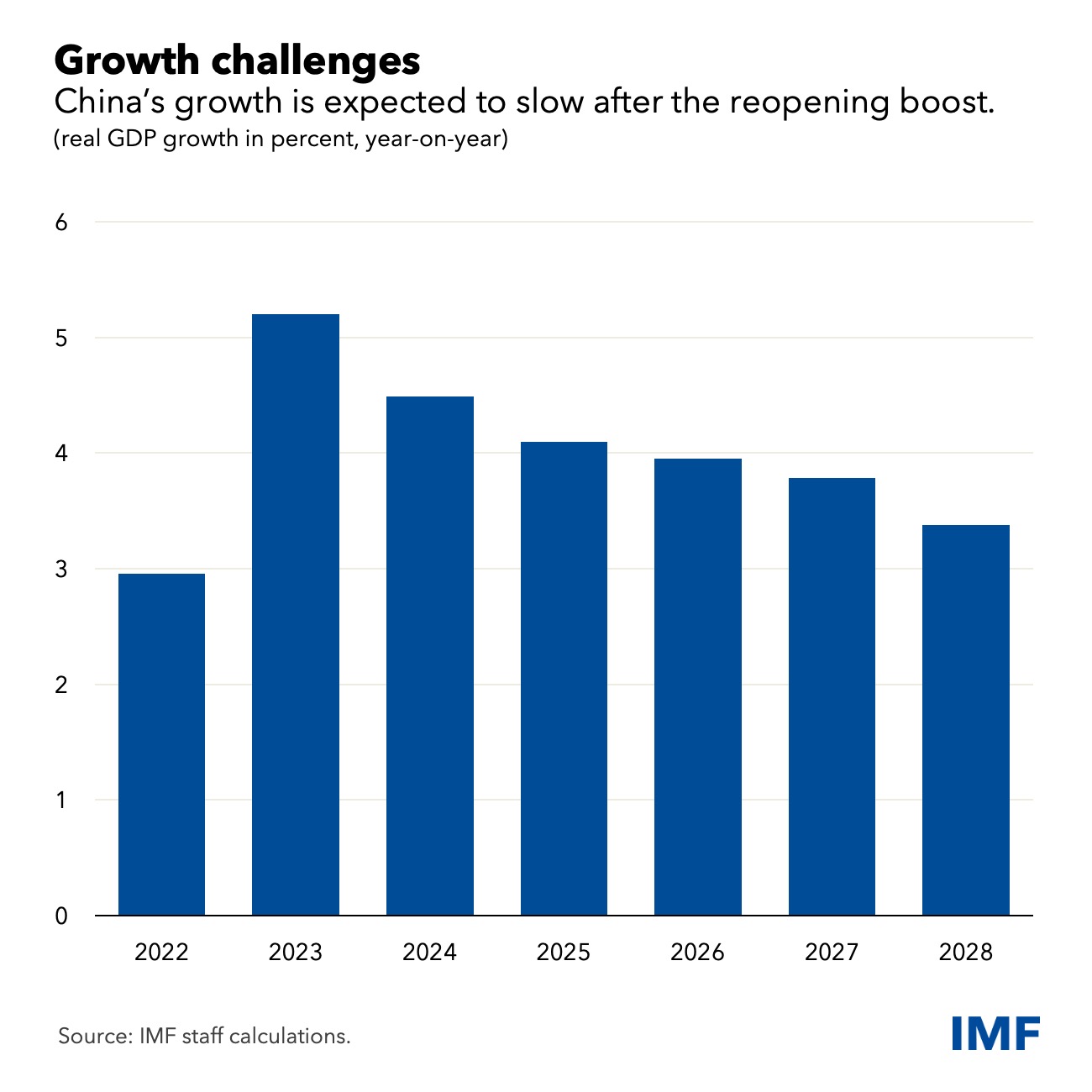Sustaining the recovery will require both monetary and fiscal support as well as accelerated structural reforms
China’s economy is set to rebound this year as mobility and activity pick up after the lifting of pandemic restrictions, providing a boost to the global economy.
The economy will expand 5.2 percent this year, according to our latest projections, versus 3 percent last year. That’s good news for China and the world as the Chinese economy is now expected to contribute a third of global growth this year.
Even so, China still faces significant economic challenges. The contraction in real estate remains a major headwind, and there is still some uncertainty around the evolution of the virus. Longer-term, headwinds to growth include a shrinking population and slowing productivity growth.
Accordingly, as we note in our annual report for China, the economy needs comprehensive macroeconomic policies and structural reforms to secure the recovery and promote balanced, green, and inclusive growth.
We recommend keeping fiscal policy neutral this year, with additional monetary policy accommodation helping secure the recovery amid muted inflation pressures and growth below its potential. Orderly restructuring of troubled property developers will also help reduce risks.
With a shrinking labor force and diminishing returns to capital investment, growth in coming years will depend on boosting declining productivity growth. Without reforms, we currently estimate growth to fall below 4 percent over the next five years.

An ambitious but feasible set of reforms can improve these prospects—importantly, in a way that is inclusive by raising the role of household consumption in demand. Reforms such as gradually lifting the retirement age to increase labor supply, strengthening unemployment and health insurance benefits, and reforming state-owned enterprises to close their productivity gap with private firms would significantly help to boost growth in coming years. Undertaking such reforms would enable China’s income level to rise by around 2.5 percent in five years.
Much is at stake. When China’s growth rate rises by 1 percentage point, growth in other countries increases by around 0.3 percentage points, according to recent IMF staff analysis. That underscores how domestic reforms could boost China’s economy and that of others too.